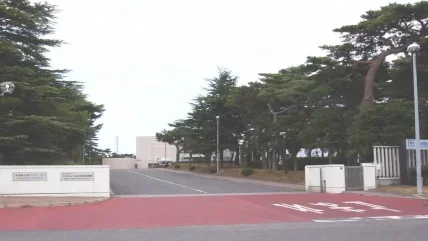
A team led by the Japan Atomic Energy Agency has completed a series of large-scale demonstration tests to develop a new floating seismic isolation system (FSIS) for small modular reactors (SMRs) to support siting in areas of high seismicity. These followed almost a year of small-scale testing in co-operation with nuclear equipment supplier IHI Corporation and engineering company JGC holdings and a pre-application engagement with the US Nuclear Regulatory Commission (NRC) which began in September 2023.
The large-scale tests from 29 January to 9 February comprised mock-up of a SMR plant design floating in a water tank mounted on the world’s largest shaking table, operated by the National Research Institute for Earth Science & Disaster Resilience (NIED) at Miki City in Japan’s Hyogo Prefecture, Japan. The SMR mock-up – nine metres long three metres wide and five metres high – was a scaled down mock-up of Japan’s High Temperature Gas-cooled Reactor by a linear ratio of 1/15, limited by the size and operating parameters of the shaking table.
The seismic waves generated by the shaking table are derived from some of the world’s biggest earthquakes, including the March 2011 Great East Japan Earthquake. A series of accelerometers installed on the floating structure and in the surrounding water pool measure the response of the floating structure and demonstrate its seismic isolation performance. NIED and IHI Corporation, joined JAEA for the tests, which were observed by NRC.
According to JAEA, the FSIS technology, designed specifically for SMRs, employs air cavities and orifices as seismic isolators to diminish the seismic response in both horizontal and vertical directions. JAEA said the FSIS, in this trial run, provided effective and omnidirectional seismic isolation, thereby reducing the SMR’s seismic response significantly. The main aim is to increase design margins and standardisation for SMRs, enhancing their safety and reliability.
The tests are part of the Nuclear Energy Innovation Promotion (NEXIP), which was first launched in 2019 by the Ministry of Economy, Trade & Industry (METI), the Ministry of Education, Culture, Sports, Science & Technology (MEXT), and JAEA. NEXIP supports private companies to develop advanced nuclear technologies using budgetary measures, share research and development facilities and infrastructure, and promote human resource development.
According to JAEA, the SMR may include one or more reactors and turbine generators. It will include the nuclear Island including reactor buildings, radwaste, control room, located on an FSIS floating structure. The cooling towers could be located elsewhere. JAEA said the project will be developed and optimised in compliance with regulatory design requirements. The JAEA Consortium developing the concept will present evidence over the next months and years to NRC as to its enhanced safety and its potential appeal to customers “that we believe will make it competitive in the new reactor market in the US and elsewhere”.
The Regulatory Engagement Plan (REP) is the key to reducing licensing uncertainties and related risks to support a business decision to pursue a future licensing application, JAEA noted.
While the FSIS technology is potentially deployable for various types and designs of NPP, the pre-application engagement with NRC will focus on the FSIS paired with a light water reactor SMR design. A decision on which reactor design to pair with the FSIS for a future licensing application will be made during the course of, or at the conclusion of, the REP and will be informed in part by the outcome of engagements with the NRC.






